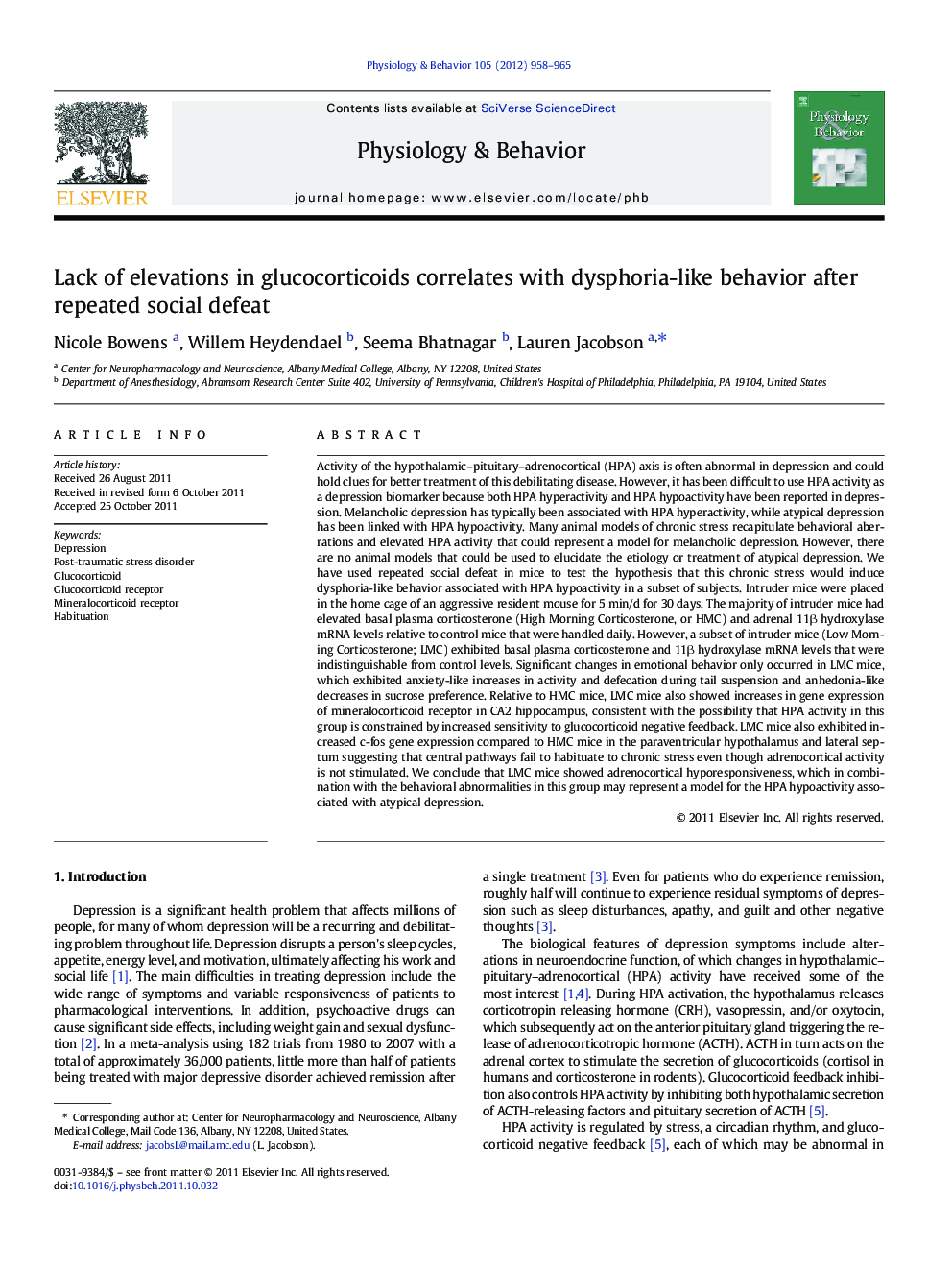| کد مقاله | کد نشریه | سال انتشار | مقاله انگلیسی | نسخه تمام متن |
|---|---|---|---|---|
| 5925347 | 1166346 | 2012 | 8 صفحه PDF | دانلود رایگان |

Activity of the hypothalamic-pituitary-adrenocortical (HPA) axis is often abnormal in depression and could hold clues for better treatment of this debilitating disease. However, it has been difficult to use HPA activity as a depression biomarker because both HPA hyperactivity and HPA hypoactivity have been reported in depression. Melancholic depression has typically been associated with HPA hyperactivity, while atypical depression has been linked with HPA hypoactivity. Many animal models of chronic stress recapitulate behavioral aberrations and elevated HPA activity that could represent a model for melancholic depression. However, there are no animal models that could be used to elucidate the etiology or treatment of atypical depression. We have used repeated social defeat in mice to test the hypothesis that this chronic stress would induce dysphoria-like behavior associated with HPA hypoactivity in a subset of subjects. Intruder mice were placed in the home cage of an aggressive resident mouse for 5 min/d for 30 days. The majority of intruder mice had elevated basal plasma corticosterone (High Morning Corticosterone, or HMC) and adrenal 11β hydroxylase mRNA levels relative to control mice that were handled daily. However, a subset of intruder mice (Low Morning Corticosterone; LMC) exhibited basal plasma corticosterone and 11β hydroxylase mRNA levels that were indistinguishable from control levels. Significant changes in emotional behavior only occurred in LMC mice, which exhibited anxiety-like increases in activity and defecation during tail suspension and anhedonia-like decreases in sucrose preference. Relative to HMC mice, LMC mice also showed increases in gene expression of mineralocorticoid receptor in CA2 hippocampus, consistent with the possibility that HPA activity in this group is constrained by increased sensitivity to glucocorticoid negative feedback. LMC mice also exhibited increased c-fos gene expression compared to HMC mice in the paraventricular hypothalamus and lateral septum suggesting that central pathways fail to habituate to chronic stress even though adrenocortical activity is not stimulated. We conclude that LMC mice showed adrenocortical hyporesponsiveness, which in combination with the behavioral abnormalities in this group may represent a model for the HPA hypoactivity associated with atypical depression.
⺠Some male mice have low morning corticosterone (LMC) after chronic social defeat. ⺠Only LMC mice exhibited dysphoria-like behavior. ⺠LMC mice had elevated hippocampal mineralocorticoid receptor gene expression. ⺠LMC neural c-fos gene expression did not habituate consistently after defeat. ⺠LMC mouse HPA function and behavior may model atypical depression/PTSD symptoms.
Journal: Physiology & Behavior - Volume 105, Issue 4, 28 February 2012, Pages 958-965